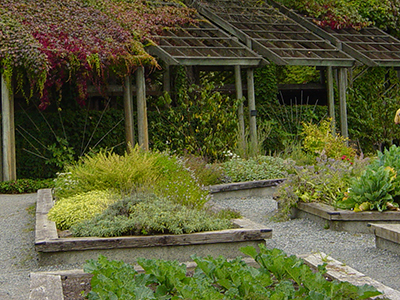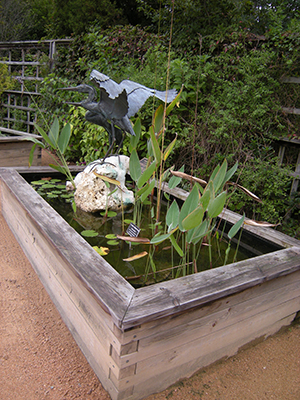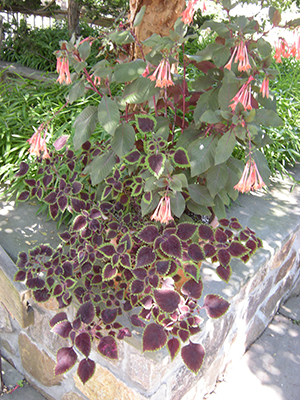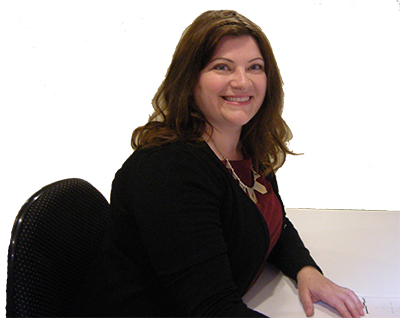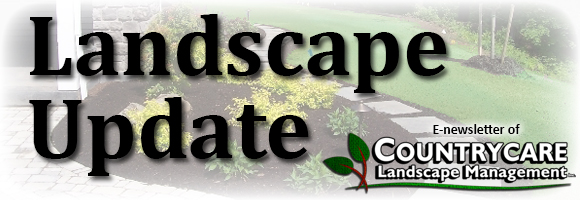
|
||||||||
|
|
||||||||
 Poet Robert Frost wrote, “Good fences make good neighbors.” He didn’t specify what material you should use to build those fences. May we suggest making your fence a living fence using plants? Besides looking nicer than chain link, wood and other inanimate fencing material, plant material can grow higher without having to comply with municipal fence laws. It also contributes to cleaner air and energy saving. Poet Robert Frost wrote, “Good fences make good neighbors.” He didn’t specify what material you should use to build those fences. May we suggest making your fence a living fence using plants? Besides looking nicer than chain link, wood and other inanimate fencing material, plant material can grow higher without having to comply with municipal fence laws. It also contributes to cleaner air and energy saving.
Pine, spruce and other tall conifer trees, planted to the west and north of your home, can block and deflect winter winds, reducing the energy you need to heat your home. Deciduous trees, planted to the south and east, can reduce the amount of energy needed to cool and heat you home. When leafed out during the summer, these trees will reduce the amount of sunlight reaching the house. When leafless in winter, sun can penetrate through the area around the bare branches and help warm your home. Placement of these natural privacy fences is important. Our designers are familiar with the trees’ ultimate height, girth and growing habits. They use this information to space the trees so they can grow naturally and still provide the privacy you want. They will also know which understory plants will grow best under deciduous trees to complete your “natural fence.” Understory are smaller plants that will grow well under the canopy of a tree. Our designers also know just how far inside your lot line to plant privacy trees so they will always be 100 percent yours. Some do-it-yourselfers plant them too close to the boundary or right on the lot line. When they mature and cross the line, these homeowners find out they now share ownership with their neighbors. |
||||||||
| Be Good To Your Back And Knees – Install Raised Beds |
||||||||
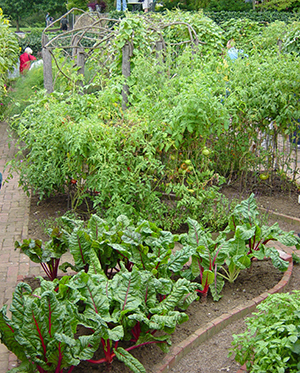 This raised bed is barely off the ground, and is contained by vertical bricks. Today, gardens don’t have to be planted in the ground. They can also be planted on the ground and above the ground to any height you want. Raised beds are popping up everywhere. Some reasons for raising beds include:
You can build your own raised beds from scratch or from a kit. Or, we can design, build and fill them for you. One note of clarification – raised beds are not portable. They don’t have bottoms. Plant boxes with bottoms are called garden planters. Raised beds are designed so that, if a plant root grows deep enough, it will eventually penetrate the native soil beneath the raised bed. As the photos show, there are as many design and material choices as there are reasons for building raised beds.
|
||||||||
| Meet Emily Name… | ||||||||
|
…the newest member of our landscape design and sales team. Emily is passionate about plants and brings a new perspective to her designs. She loves to try new plants, and enjoys creatively blending form, color, texture and shades of green. Emily is a recent graduate of Finger Lakes Community College, where she earned her degree in ornamental horticulture. She has also earned the New York Certified Nursery & Landscape Professional (CNLP) designation. The Indiana native got hooked on plants while working at a garden center in Virginia for five years. Her husband was stationed there with the U.S. Navy. Today, Emily tends the beautiful gardens at her home in Clifton Springs when not designing landscapes for our customers.
|
||||||||
| Feature Plant Of The Month – Oakleaf Hydrangea |
||||||||
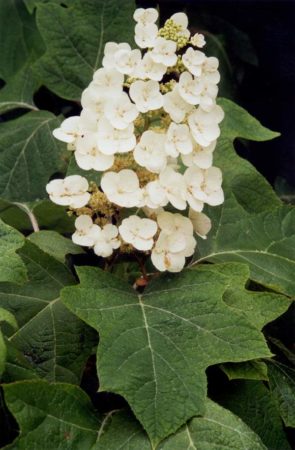 When we think of hydrangeas, varieties of the popular mophead hydrangeas usually come to mind. These are typical of a group of hydrangeas characterized by big ball-shaped flower clusters that grow on new wood. However, there are other species in the genus Hydrangea, including Hydrangea querciflora (oakleaf hydrangea).If you like hydrangeas, you’ll love the oakleaf species. You’ll recognize it immediately when it’s in bloom. Instead of big round flower clusters, its flowers grow on cone shaped panicles like lilacs. These flowers also grow on old wood like many other shrubs. This means that they should be pruned soon after the blooms are finished so that they have time to set next year’s buds in the fall.White blooms appear on oakleaf hydrangeas in early summer. As they age, the blooms turn one of several shades of pink. One variety even ages green. The leaves are shaped like their namesake, the oak tree. The fall color is also like oak trees, ranging from red to purple, orange and yellow. The bark on older branches exfoliates in fall, adding to the oakleaf hydrangea’s year round color. When we think of hydrangeas, varieties of the popular mophead hydrangeas usually come to mind. These are typical of a group of hydrangeas characterized by big ball-shaped flower clusters that grow on new wood. However, there are other species in the genus Hydrangea, including Hydrangea querciflora (oakleaf hydrangea).If you like hydrangeas, you’ll love the oakleaf species. You’ll recognize it immediately when it’s in bloom. Instead of big round flower clusters, its flowers grow on cone shaped panicles like lilacs. These flowers also grow on old wood like many other shrubs. This means that they should be pruned soon after the blooms are finished so that they have time to set next year’s buds in the fall.White blooms appear on oakleaf hydrangeas in early summer. As they age, the blooms turn one of several shades of pink. One variety even ages green. The leaves are shaped like their namesake, the oak tree. The fall color is also like oak trees, ranging from red to purple, orange and yellow. The bark on older branches exfoliates in fall, adding to the oakleaf hydrangea’s year round color.
Pick a planting site that has well drained soil and full sun to part shade. The site should also be sheltered from winter winds or you will need to wrap your oakleaf hydrangea in burlap to protect it. We are at the northern edge of its hardiness zone. There are a number of varieties of oakleaf hydrangea to choose from, and one of our designers will be happy to show you photos of each and explain the differences between them. We can also help you with siting for the conditions discussed above. Finally, we can even plant your oakleaf hydrangea for you. Countrycare Landscape Management |
